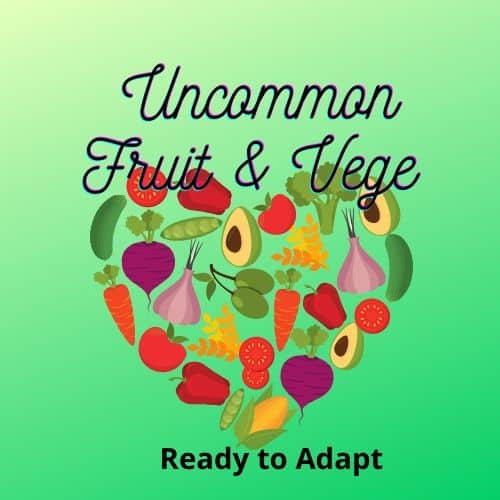
I have been swapping stuff for years. Its not only a great way to get to know your neighbours but I have made so many lasting friendships. I now have a group of experts I can call upon to answer questions for me or just have a laugh. Swapping or Unconsumerism is a growing trend so I thought I would give you the low down.
What is Consumerism?
To define unconsumerism we first need to address what is consumerism?
Our lives are filled with stuff! We work to earn a living so we can buy more stuff.
However put simply, Consumerism refers to the theory that spending money and consuming goods is good for the economy. And as we all know the governments of the world work very hard to ensure we spend our hard earned cash. You have heard the rhetoric…. Stimulus packages are designed to inject money into the economy – so you will spend it!
Morag Gamble 2017 wrote “Australians are suffering from ‘Affluenza’. We have rising personal debt – one of the highest in the world, we throw out almost as much clothing as we buy each year and we have one of the highest ecological footprints.”
Affluenza!!! As I write this (2020) the world is gripped by CoronaVirus and country after country is reporting huge numbers of people becoming ill or worse, and their economies are in free fall. I think this term Affluenza is especially relevant right now as we are told that the world is about to or already is plunging into a great recession or depression depending on who you listen to.
We have become so affluent especially in westernized countries that we have forgotten how to be anything else. It’s time to take stock of who we are, our spending habits, and what our future will look like on the other side of this global pandemic/recession.
How do you not be a consumer?
Jenni Bergman wrote back in 2011 that while working from home (something we are all being asked to do right now) her main motivation for leaving the house was to buy something.
This feels and sounds very wrong. Imagine if you only left the home in order to buy something – whether its groceries or anything else. But in actual fact apart from going to work many of us do exactly that. Sure we might go out to meet a friend for coffee (buying something) or to the local gym to exercise (still buying something). You get the point.
What we need to do as Morag states so well is to become or redefine ourselves as doers, producers, makers and thinkers. When we change the way we have been told to think we are giving ourselves the licence to do differently.
Unconsumers are not spend thrifts or skin flints, they are every day people who recognise that we have enough and when we let go of some of the stuff to the benefit of others we gain so much more than that stuff was worth.
We need to radically redefine ourselves as makers, doers, producers, thinkers, be-ers for our own sanity, for future generations and for the earth.
Morag Gamble 2017
How to Rehome Stuff
Many different ways exist to rehome our unwanted or unnecessary items. We all know about thrift shops and charity bins, there are flea markets, car boot sales, garage sales. These are all legitimate ways to rehome unwanted items.
But what if we buck the consumerism trend and rehome stuff together. What does that even look like?
Swap parties and meetings are not new but they are on the resurgence.
The 1million women project holds regular clothing swaps in a variety of locations. The men have had their swap meets (for car parts and the like) for years.
I have been a member of the Unconsumers Group for several years now. It amazes me how generous people can be. I have swapped plants, empty bottles, books and countless other items.
Many Permaculture groups have what they call a share and swap table at their monthy meetups. Everyone brings something to share and swaps it for something they need. The variety is only limited by the imagination.
I have seen plants, seedlings, compost, bacon, bread, jams and preserves, beeswax cloths, eggs, and even gourmet mushrooms to name just a few.

How to plan the swap
- Step One: Define your goals. Work out who you would like to participate in your swap. Will they be people from your neighbourhood, your building, your town or maybe a particular type of person like members of your local library or gym?
- Step Two: What will you swap? You can have a specific swap like clothing or car parts, or you could just leave it open. Often though a theme is a good place to start. The local gardening group might like to hold a cuttings and seedlings swap for example.
- Step Three: Get some help/support. If you haven’t already you will need some help to get things organised. There will be jobs to divide up such as marketing or advertising the event and registering participants. So don’t be an island – get some help from like minded people!
- Step Four: Choose a Venue and Date. Remember your goals and vision for your event, choose a day and time that are likely to get a good response and participation rate. Usually two to three hours is a good length of time for a swap. Will you have refreshments available? When choosing a venue, consider the size and location, accessibility for those who may need additional assistance, and of course cost. Possible free spaces include people’s houses, public parks, community centres or halls, libraries and schools. If you already have access to one of these – do you know someone who does?
- Step Five: Spread the word. Be strategic – you probably have limited time, so focus your efforts on reaching people where they are. Sometimes all you need is word of mouth. To reach a broad audience you could make a Facebook event page, put up eye-catching flyers around town, send an event blurb to email lists, and even contact your local newspapers and other media outlets. It helps to start a buzz about a month before the swap, and then send a reminder a day or two before the event.
- Step Six: Signs and Supplies. This is especially important for bigger swaps, it’s good to have some easy-to-read signs outside the venue. You could make a generic “Swap Meet Today” sign that can be reused each month. It’s also good to set up a welcome table with info and a sign-up sheet so you can stay in touch with people about future events. Folks usually need tarps or tables for their stuff. Sometimes the venue will have these available; if not, ask people to bring their own and/or arrange to borrow some from someone else in the community.
- Step Seven: Have the Swap! If it’s a smaller gathering, you could start by going around in a circle with each person describing what they brought and what they’re looking for (including services and items that are available but not physically at the swap). For bigger events, put up a “Have” and “Want” boards in a central place with post-its and pens so people can list items along with their name and contact information. You may find it’s helpful to separate the stuff at the swap into two main areas – “Free” and “For Barter/Swap.” This helps avoid confusion. But remember this is about swapping no selling allowed. As for the actual swapping, it seems to work best when people do their own thing and make arrangements organically.
- Step Eight: Document and Evaluate. Take photos and do a headcount of how many people show up. Ask people to share their stories of successful swaps as well as feedback on what worked and what didn’t work at the event. Before you plan your next swap, take time to reflect on this feedback and think about what you might want to do differently.
- Step Nine: Keep the momentum going. Follow up with people and organize more swaps and gatherings. Encourage new people to host events and take the lead in other ways. Share what you’re doing online and with local press.
- Step Ten: Relax: You have earned it.
Some Extra Tips
Tricks of the Trade
A swap can easily get out of hand when there’s four-ply cashmere or a Le Creuset Dutch oven up for grabs. Here’s how to maintain order.
Be clear about what’s swap-worthy. Ask friends to bring clean goods in gently used condition (that is, no ratty gym shorts or a Scrabble set missing the letter Q). Guests should also come with an extra tote bag for carting home their finds.
Stock up on supplies. Guests can claim desired items using color-coded stickers. Hangers and poster board (for additional signage) may also come in handy.
Establish a system. Choose one of the following swapping strategies, which should be explained in your Evite or at the start of the party.
- Take turns shopping. Draw straws to pick who shops first. Limit the number of items to three per turn to keep it fair and moving fast.
- Use tokens. The host hands out a poker chip for every item a guest donates. If a person brings 10 items, she gets 10 tokens with which she can purchase 10 new items.
- Keep the numbers even. Everybody goes home with the same number of items that they donated.



